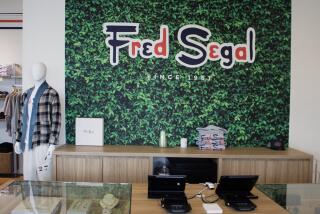The Download: Why e-commerce fads competing with Amazon eventually fade

Itâs hard to name a category of start-ups that has struggled to produce big, billion-dollar exits more than e-commerce.
Competing with Amazon isnât easy, it turns out, and aspiring Davids have turned to ever more novel strategies to differentiate themselves from Goliath. The problem? Like anything trendy, each new twist on the e-commerce model eventually goes out of style.
Perhaps you remember the great subscription commerce wave of 2012 â as I called it, stuff-in-a-box. It was a clever way to score recurring revenue by sending subscribers a container of curated stuff they didnât even know they wanted.
But it didnât take long for each new stuff-in-a-box start-up to feel increasingly ridiculous: subscription perfumes, dog toys, cured meats, even stilettos hawked by Kim Kardashian. Customers were often frustrated by the relentless barrage of products, with some not realizing they were being automatically charged each month for the goods.
Investors quickly realized the model was little more than a 21st century twist on the Jam of the Month club, and the subsequent shakeout, marked by mergers, shutdowns and pivots, happened quietly.
After subscription commerce came âcontent and commerce,â a trend that peaked so fast itâs more of a blip than a full-fledged fad.
The idea â tacking an editorial operation onto a store â failed to increase profits for most start-ups, and last year the leader of the pack, Thrillist, split its e-commerce and media businesses. Founder Ben Lerer conceded to technology website Re/code that it was ânot the most productiveâ for the two to share resources.
Lately the hottest thing in e-commerce is âClassPass for X,â a trend that combines monthly subscription fees with experiences. (Millennials love experiences, Iâm told.)
It follows the success of ClassPass, a well-funded start-up that sells unlimited fitness classes at participating studios for about $100 a month, depending on the market. (In the Los Angeles/Orange County market, the price of ClassPass was recently increased to $119 a month from $99).
There is already a ClassPass for hair blowouts (Vive; $65 per month), massages (Zeelâs Zeelot program; cost varies) and live music (Jukely; $25 per month). Itâs too soon to call this new model a fad, but if past e-commerce innovations are any indication, it may not be long for this world.
All of these recent e-commerce models are descendants of the mother of all retail fads: flash sales. With the January acquisition of Gilt Groupe at a painfully low price â it raised $280 million but sold for just $250 million â the model has finally croaked.
Flash sales (and its cousin, daily deals) suffered from over-saturation. Copycats drove up the price of acquiring customers, which accelerated start-upsâ burn rates and prompted shopper âdeal fatigue.â
When it became clear in 2012 that Groupon and Gilt would not live up to soaring expectations, copycats pivoted away from the model. But instead of focusing on the fundamentals (supply-chain management, say, or customer service), many of them simply latched onto the next hot strategy.
With such carnage, itâs puzzling that so many e-commerce entrepreneurs continue to chase buzzy new business models.
But the explanation is simple: As long as thereâs an Amazon, there will be e-commerce fads. The Jeff Bezos-led behemoth has already won on price, selection and service. All that leaves is novelty.
Erin Griffith is a writer at Fortune.
Twitter: @eringriffith
More to Read
Inside the business of entertainment
The Wide Shot brings you news, analysis and insights on everything from streaming wars to production â and what it all means for the future.
You may occasionally receive promotional content from the Los Angeles Times.










